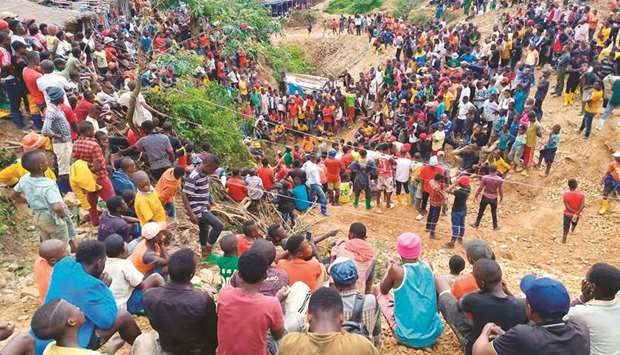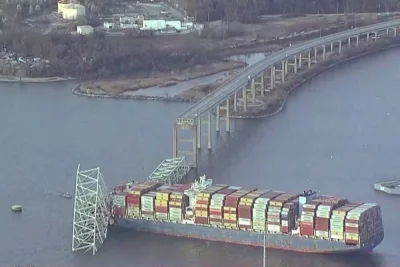Informal gold miners in eastern Democratic Republic of Congo scoured rubble yesterday for more than 50 colleagues presumed dead after a mine collapsed under the weight of heavy rain.
Hundreds of young men in rubber boots crowded around the site of Friday’s cave-in, with some removing rocks by hand from the muddy hillside, video footage showed.
Dozens of people die each year in accidents in largely unregulated artisanal mines in Congo, where often ill-equipped diggers borrow deep underground in search for ore.
Alexandre Kamundala, deputy mayor of the nearby town of Kamituga, said no bodies had been recovered so far.
“The rescue teams have been working hard since this morning to try to find bodies, but given the lack of working tools, they are finding it difficult to move forward efficiently with the search.”
The office of the governor of South Kivu province, Theo Kasi, said most of the victims were young people, and expressed condolences to their families.
“The search continues to identify our deceased compatriots, bring assistance and implement measures to prevent such incidents from repeating,” Kasi’s office said in a statement.
DR Congo’s mineral-rich but volatile east faces regular attacks from a plethora of militias and rebel groups which operate freely in the region.
Provincial governor Theo Ngwabidje Kasi deplored “the tragic deaths of 50 people, most of them young”.
However, Kamituga mayor Alexandre Bundya said “we are not yet sure of the exact number” of victims.
A local resident who was at the scene, Jean Nondo Mukambilwa, said torrential rain had flooded a river close to the mine.
“Water went into the three tunnels. When people tried to get out, there was no way as the water was flowing strongly, with high pressure.”
Bundya blamed “soil subsidence caused by torrential rain” for the accident.
The mayor decreed a two-day mourning and called on locals to help extract the bodies from the ground.
“Investigations must be carried out to find out the causes of this disaster,” said a representative of civil society, Nicolas Kyalangalilwa.
“The authorities must take responsibility instead of taxing” these miners.
Accidents in DR Congo’s makeshift mines are common and often deadly.
In June 2019, at least 39 men died when a copper mine in Kolwezi, in the southeastern Katanga region, partially collapsed.
Because many such mines are in remote areas however, the accidents are under-reported.
Cave-ins, landslides, and asphyxia are common risks faced by artisanal miners, who rarely have any protective equipment beyond rubber boots, according to Sara Geenen, an assistant professor at the University of Antwerp in Belgium who has conducted research at artisanal gold mines around Kamituga.
“Being an old mining town, Kamituga does have quite a lot of people with geological and technical expertise, but they often don’t have the financial means or access to technology to dig and shore up the tunnels properly,” Geenen said in an e-mail.
A World Bank report last year estimated the number of small-scale miners in Congo at 2mn, many more than work in industrial gold, copper and cobalt mines owned by companies like Glencore and Barrick Gold.
DR Congo has huge reserves of gold, cobalt, copper and coltan.
It is the world’s largest producer of cobalt, which is crucial for making batteries used in mobile phones and electric vehicles.
The illegal miners sell what they find to local traders, who sell it on to large foreign companies and usually are paid a pittance.
Mining hardly benefits DR Congo’s 80mn people.
The World Bank said in 2018 that 72% of the population lived on less than $1.9 a day.
Most Congolese earn their living in informal economic sectors such as makeshift mining.
According to a report by London-based specialist firm Darton, up to 16% of the cobalt extracted in the mineral-rich Katanga province came from illegal miners.

People gather at the entrance of one of the mines in Kamituga, South Kivu, where dozens of artisanal miners are presumed dead after heavy rain filled the mine tunnels.


